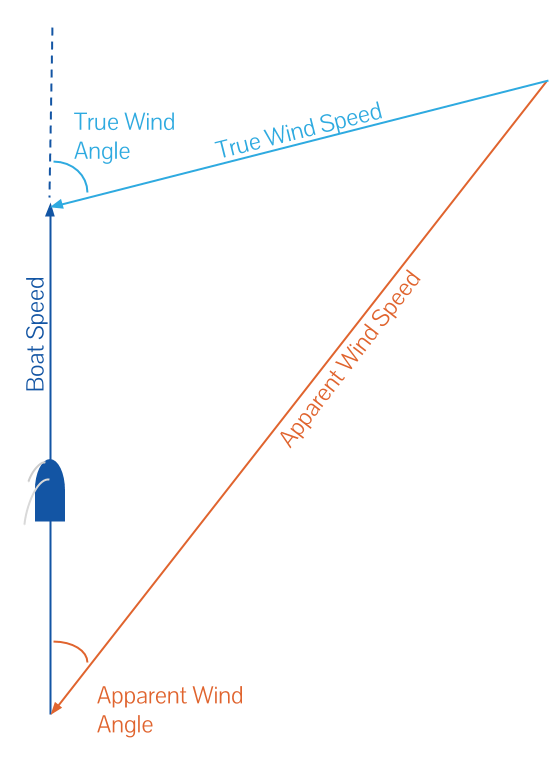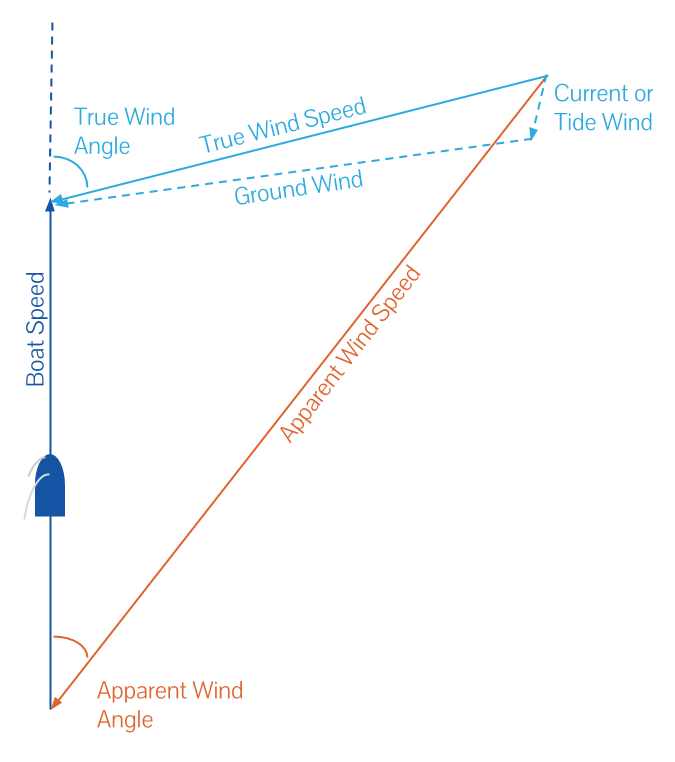 Every sailor in the world has seen this image (the wind triangle) on the board of a sailing school’s classroom or in a yachting manual. What some sailors may have missed from that lesson or that chapter of the manual is what influence the current has upon the Apparent Wind.
Every sailor in the world has seen this image (the wind triangle) on the board of a sailing school’s classroom or in a yachting manual. What some sailors may have missed from that lesson or that chapter of the manual is what influence the current has upon the Apparent Wind.
If we look at the triangle as it is, we cannot see any clear references to the current. We need to take a look at every component of the triangle in more detail:
- Apparent Wind Speed: is the wind that we feel on the boat and is the result of the sum of the Boat Speed vector and the True Wind vector.
- Boat Speed: is also known as Motion Wind and is the wind created by the movement of the boat relative to the surface of the water.
- True Wind Speed: well, here comes the current!
As suggested in different manuals and articles, True Wind should actually be called Sailing Wind. The use of the word “True” leads many sailors to confusion and misunderstandings.
The True Wind is NOT the wind that we feel on the dock or on the beach before going out sailing. The True Wind is NOT the wind that the forecasts show. So, what is it?
The True Wind is actually the sum of two other wind vectors:
- The Ground Wind: is the wind that is measured relative to a fixed point on the ground (a weather station in the harbour, the instruments of a boat at anchor etc).
- The Tide or Current Wind: is the wind created by the motion of the water relative to the land.
 We have finally found the current (tide) component!
We have finally found the current (tide) component!
We can now draw all the components in a single diagram and, thanks to which, it is easy to see that any change in the current direction or speed affects the Apparent Wind.
This means that every time we feel a wind shift on the boat, it may be caused by a variation in the current and not in the ground wind. This changes the point of view on many tactical and strategic decisions along the regatta course.
